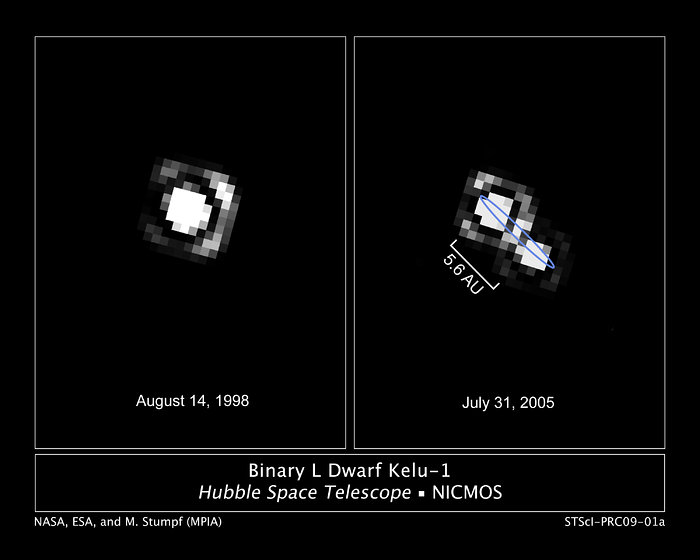Binary brown dwarf Kelu-1
These NASA/ESA Hubble Space Telescope images of the binary brown dwarf Kelu-1 trace the orbital motion of the two stars over a seven-year span as photographed by the Near Infrared Camera and Multi-Object Spectrometer (NICMOS) on Hubble.
In 1998, the "stars" were too close together to be resolved by Hubble. By 2005, they had moved apart to a separation of 835 million kilometres. The projected maximum separation is 885 million kilometres.
Binary systems allow astronomers to estimate the mass of companion objects. The brown dwarfs are 61 and 50 times the mass of Jupiter. They are therefore too small to burn as stars, but too large to have formed as planets. Based on the total estimated mass of the system, astronomers suspect there is a third brown dwarf member that has not yet been resolved.
Credit:About the Image
About the Object
| Name: | Kelu-1 |
| Type: | Milky Way : Star : Type : Brown Dwarf Milky Way : Star : Grouping : Binary |
| Distance: | 60 light years |
| Category: | Stars |
Colours & filters
| Band | Telescope |
|---|---|
| Infrared Near-IR |
Hubble Space Telescope
NICMOS |
